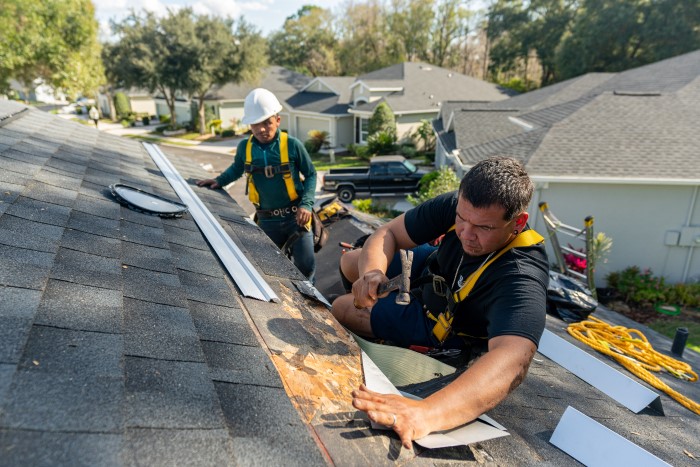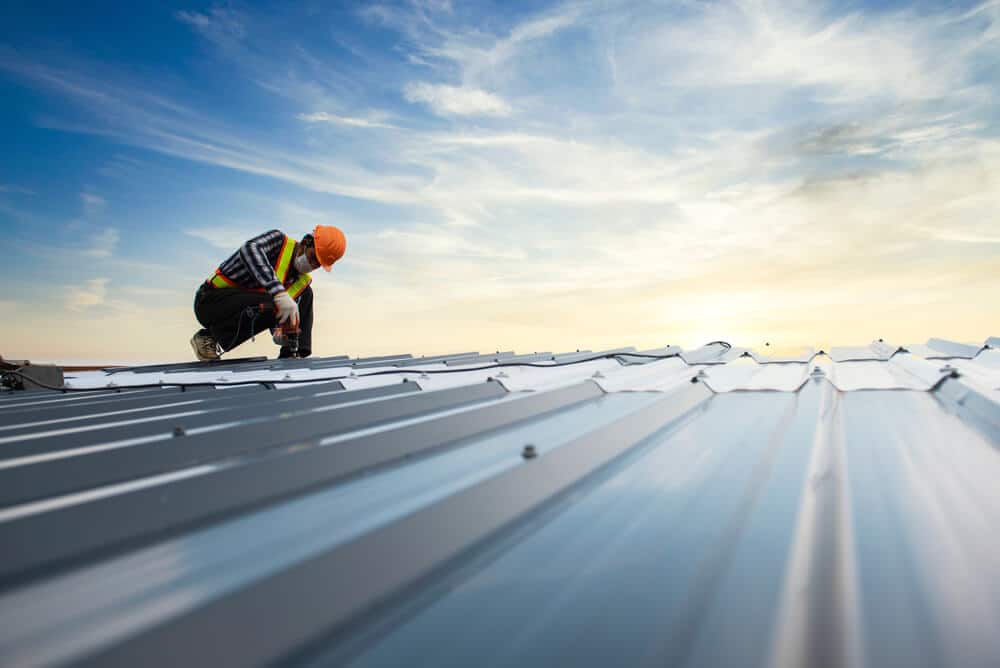Roofing Oahu: Specialist Professional Roofer for Your Oahu Residential property
Wiki Article
Understanding the Various Sorts Of Roofing Systems: A Comprehensive Guide for Homeowners
With a range of options-- ranging from the typical gable to the modern level-- each kind provides distinct advantages and obstacles that must line up with the property owner's environmental considerations and particular demands. As we discover the intricacies of different roof covering kinds, it comes to be apparent that one size does not fit all; the appropriate option might shock you.Gable Roofings
Saddleback roofs, characterized by their triangular shape, are amongst one of the most preferred roof covering designs because of their simplicity and effectiveness in dropping water and snow. This design features 2 sloping sides that satisfy at a ridge, permitting efficient drainage and decreasing the risk of water accumulation. The steep pitch generally related to saddleback roofs enhances their ability to deal with hefty rainfall, making them ideal for various environments.In enhancement to their practical benefits, gable roof coverings provide aesthetic adaptability. They can be adjusted to numerous building styles, from conventional to modern-day homes. The layout can likewise suit additional features such as dormer home windows, which boost natural light and ventilation in the attic room.
In addition, gable roofings give sufficient space for insulation, adding to energy effectiveness. Homeowners can pick from a range of roof products, including asphalt shingles, metal, and floor tiles, additionally enhancing modification choices.
Despite their advantages, saddleback roofs might call for extra support in areas susceptible to high winds or heavy snowfall. In general, the gable roof covering remains a preferred selection as a result of its mix of performance, longevity, and aesthetic charm.
Flat Roofs
Level roofs are usually identified for their minimal layout and practical applications, especially in business and commercial settings (oahu roofing). These roofing systems include a almost straight or horizontal surface area, which allows for easy construction and functional area utilization. While they may lack the visual charm of angled roofs, level roofing systems provide many benefits, particularly in metropolitan environments where making best use of space is essentialOne of the primary advantages of level roofings is their accessibility. Home owners can utilize the roof area for numerous purposes, such as rooftop yards, terraces, or photovoltaic panel installations. In addition, flat roof coverings are generally extra cost-efficient to keep and mount contrasted to their sloped equivalents, as they call for less products and labor.
Typical products utilized for level roofings consist of built-up roof (BUR), modified asphalt, and single-ply membrane layers, each offering distinctive advantages. Overall, flat roof coverings serve as a adaptable and useful selection for numerous home owners and companies alike.
Hip Roofs
Hip roofs are characterized by their sloped sides that assemble at the top, developing a ridge. This layout is distinctive from gable roofs, as all 4 sides of a hip roof covering slope downwards towards the wall surfaces, providing a much more secure structure. The angle of the inclines can vary, permitting flexibility in building aesthetic appeals and performance.Among the key advantages of hip roofings is their ability to hold up against heavy winds and adverse weather. The sloped surfaces make it possible for better water drain, minimizing the danger of leaks and water damages. Additionally, hip roofing systems use raised attic room space, which can be utilized for storage space or also exchanged habitable locations.
Nevertheless, creating a hip roof can be much more pricey and complicated than simpler roof covering kinds, such as saddleback roofs. The additional material and labor associated with producing the inclines and guaranteeing appropriate structural stability can cause higher expenditures. Despite these drawbacks, lots of home owners prefer hip roof coverings for their resilience, aesthetic appeal, and potential for energy efficiency.
Mansard Roofings
he has a good point Mansard roofing systems, frequently identified by Get More Information their distinct four-sided design, feature two slopes on each side, with the reduced slope being steeper than the top. This building style, stemming from France in the 17th century, is not just visually attractive however useful, as it takes full advantage of the useful area in the top floorings of a structure. The steep reduced incline allows for even more clearance, making it an ideal choice for loft spaces or attic rooms, which can be exchanged living areas.Mansard roof coverings are identified by their versatility, suiting numerous building designs, from typical to modern-day. They can be built with different materials, consisting of asphalt roof shingles, slate, or steel, giving home owners with an array of options to match their preferences and budgets. Furthermore, the design enables the combination of dormer home windows, improving natural light and ventilation in the upper degrees.
However, it is vital to take into consideration the possible downsides. Mansard roofs might need even more upkeep because of the complexity of their layout, and their high inclines can be challenging for snow and rain drainage. Generally, mansard roofs combine sophistication with functionality, making them a popular choice among house owners seeking unique building features.
Shed Roof Coverings
As property owners progressively look for simplicity and functionality in their building styles, dropped roofs have arised as a prominent option. Defined by a solitary sloping aircraft, a shed roof covering provides a minimal aesthetic that complements different home styles, from modern to rustic.Among the key benefits of a shed roof covering is its straightforward building, which often translates to lower labor and material costs. This style enables efficient water drain, lowering the risk of leakages and water damages. Additionally, the upright slope offers enough area for skylights, improving natural light within the interior.
Lost roof coverings likewise use convenience in regards to usage. They can be properly incorporated right into additions, garages, or outside frameworks like sheds and pavilions. Moreover, this roofing style can accommodate different roof covering materials, consisting of steel, asphalt roof shingles, and even green roofs, straightening with environmentally friendly initiatives.
Nonetheless, it is important to take into consideration regional environment problems, as heavy snow lots might demand pop over to this site changes to the roof's angle or framework. Generally, lost roofings present a useful and visually pleasing choice for house owners aiming to make the most of capability without jeopardizing design.
Final Thought


Gable roof coverings, identified by their triangular shape, are amongst the most popular roofing styles due to their simpleness and effectiveness in dropping water and snow. oahu roofing. The high pitch commonly linked with gable roofings improves their ability to take care of hefty precipitation, making them suitable for various climates
While they might lack the aesthetic appeal of pitched roof coverings, flat roofings offer various advantages, particularly in metropolitan settings where making best use of space is critical.

Report this wiki page